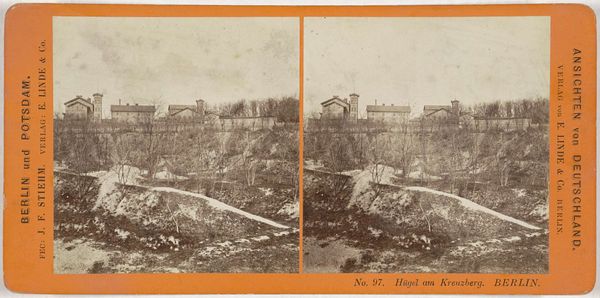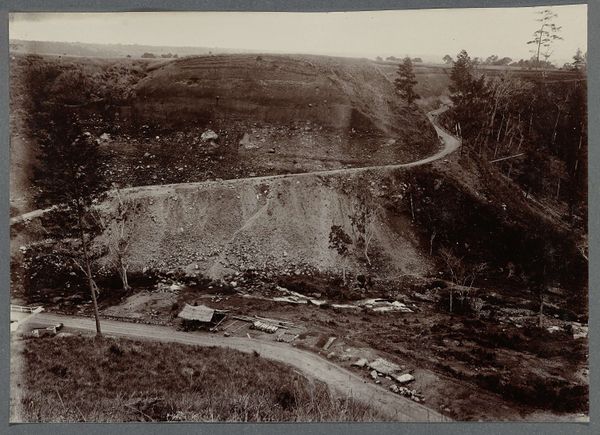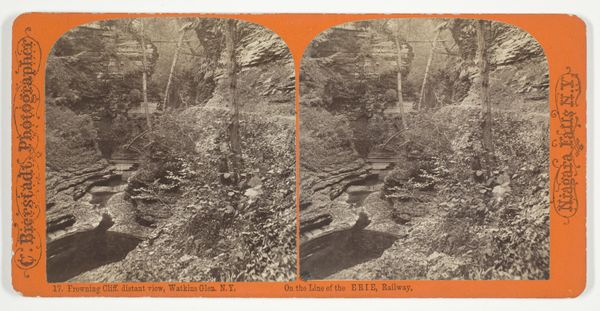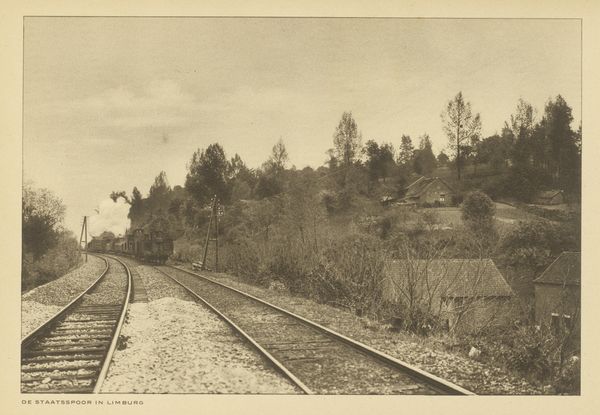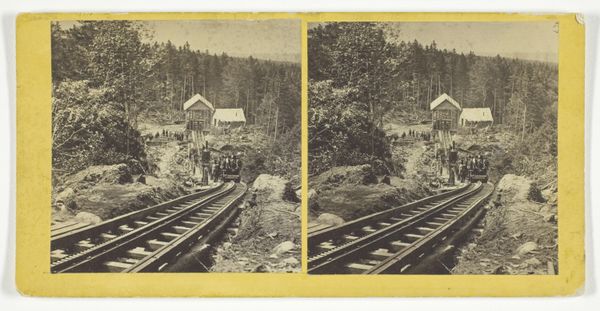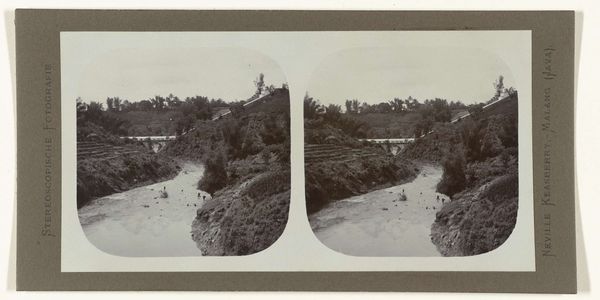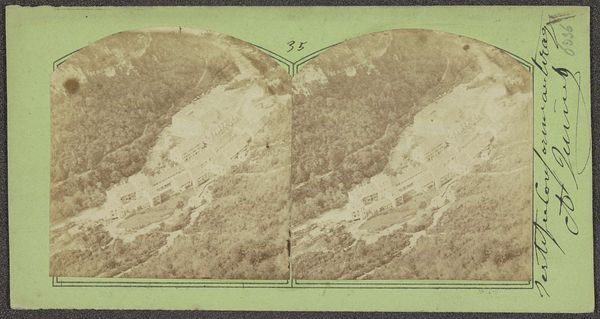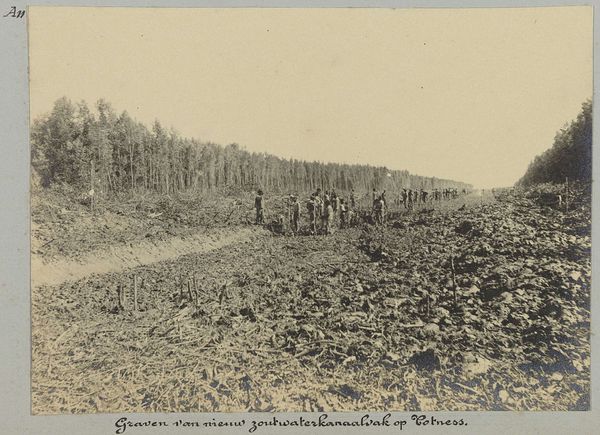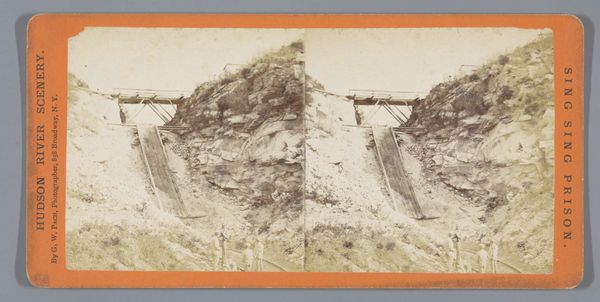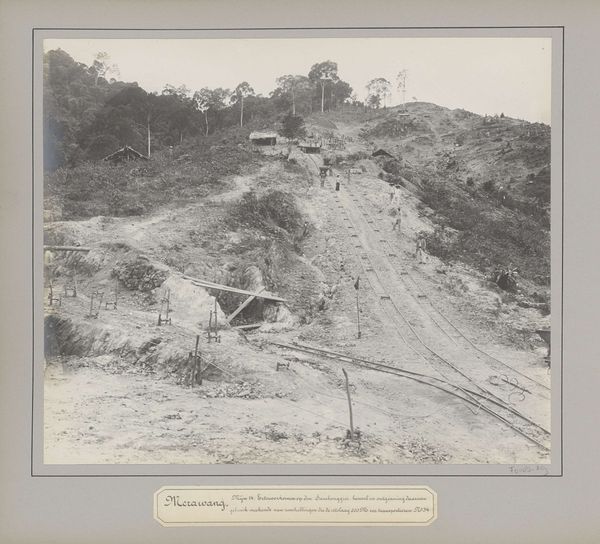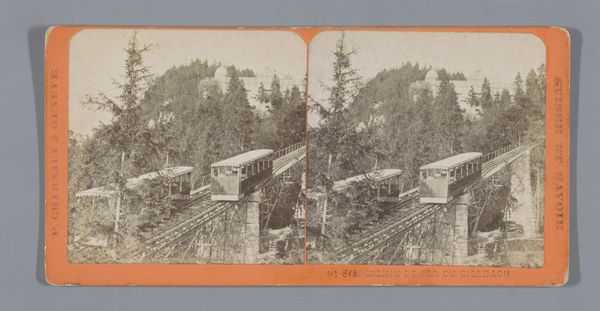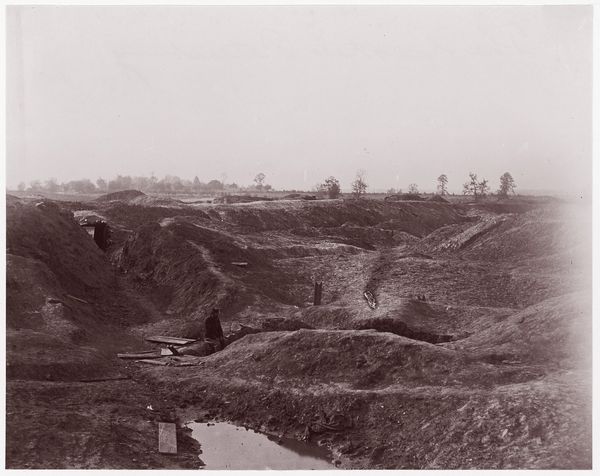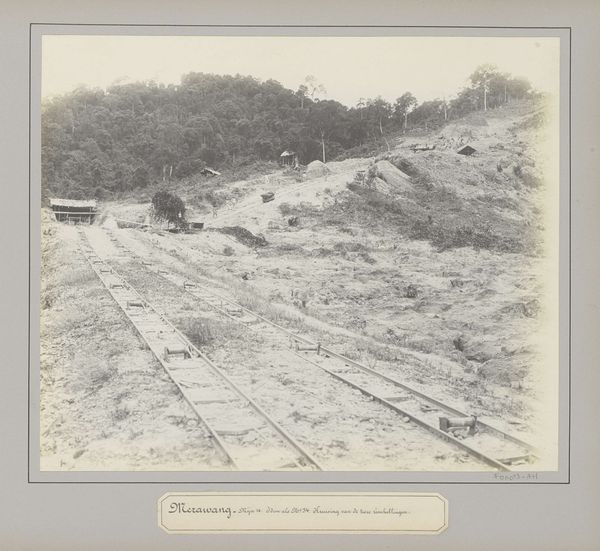
silver, print, photography, gelatin-silver-print
16_19th-century
silver
landscape
photography
naturalistic tone
gelatin-silver-print
hudson-river-school
men
united-states
cityscape
watercolour bleed
watercolour illustration
realism
Dimensions: 7.5 × 7.6 cm (each image); 8.2 × 17.1 cm (card)
Copyright: Public Domain
Curator: Alfred A. Hart’s photograph, “Road East of Station, at Auburn,” dating from 1864 to 1869, captures a significant moment in the expansion of the Central Pacific Railroad. The Art Institute of Chicago holds this gelatin-silver print. Editor: It has such a stark feel, doesn't it? Almost barren. Those rails cutting through what seems like an excavation site dominate the entire frame. Curator: The railroad symbolizes more than just transit, it is about profound alteration. The symbolism echoes the mythic narrative of the American West and speaks to ideas of Manifest Destiny. This infrastructural project leaves an indelible mark on the very landscape, uprooting existing cultures and landscapes. Editor: The labor is evident in the exposed earth. It makes you think about the sheer physical work of blasting and clearing to lay those tracks, and the materials sourced to make the tracks. The whole image is an index of capitalist expansion, built upon exploited resources and workers. Curator: It’s important to remember the image’s cultural context too. These photographs, intended for stereo viewers, provided eastern audiences with tangible ‘proof’ of westward progress. There is a sense of staged authenticity at play. A carefully crafted image to perpetuate certain ideals. Editor: Exactly, there’s a deliberate quality, yet the raw materials, silver, gelatin—remind us how intrinsically photography, how *seeing*, is also bound up with these extractive processes. Even this “document” isn't neutral; its production required an industry. Curator: The image leaves one wondering if it documents progress or loss. We, standing in the future of that moment, recognize this to be a bit of both. The mythology of the west can be a compelling but ultimately destructive ideology. Editor: Yes, viewing the image this way allows one to perceive not merely an image of a railroad, but a document of transformed materiality and industrial processes. It's a compelling commentary on what it means to build.
Comments
No comments
Be the first to comment and join the conversation on the ultimate creative platform.
